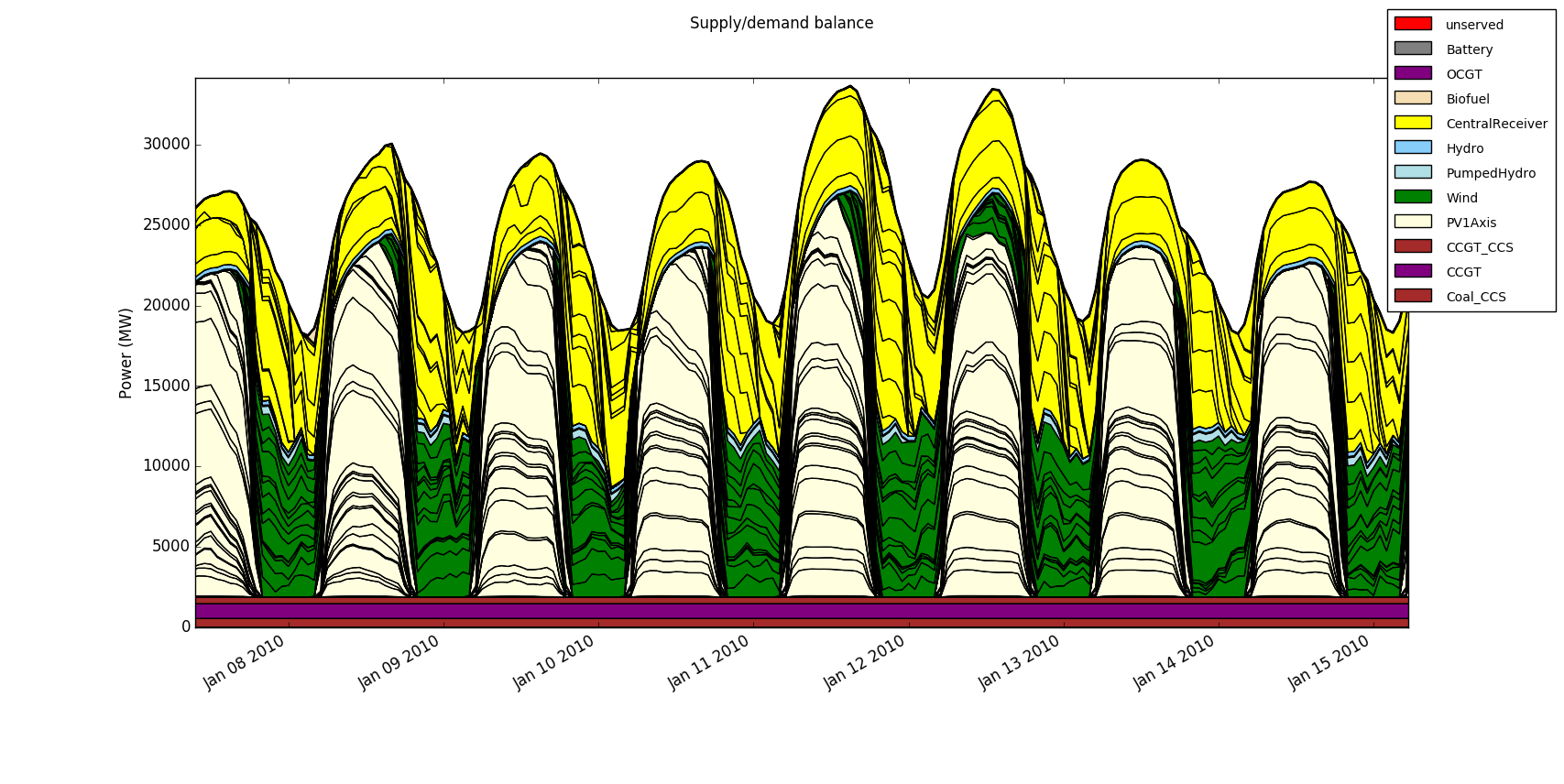National Electricity Market Optimiser (NEMO)
NEMO is a chronological production-cost and capacity expansion model for testing and optimising different portfolios of renewable and fossil electricity generation technologies. It has been developed and improved over the past decade and has a growing number of users.

It requires no proprietary software to run, making it particularly accessible to the governments of developing countries, academic researchers and students. The model is available for others to inspect and, importantly, to validate the results.
Installation
pip install nemoptFeatures
For a set of given (or default) generation or demand traces, users can:
- Specify & simulate a custom resource mix, or;
- "Evolve" a resource mix using pre-configured scenarios, or configure their own scenario
Evolution strategy
The benefit of an evolutionary approach is that while NEMO is searching for the least-cost solution, NEMO can also explore "near-optimal" resource mixes.
NEMO no longer uses genetic algorithms, but has adopted the better performing CMA-ES method.
Resource models
NEMO has models for the following resources: wind (including offshore), photovoltaics, concentrating solar power (CSP), hydropower, pumped storage hydro, biomass, black coal, open cycle gas turbines (OCGTs), combined cycle gas turbines (CCGTs), diesel generators, coal with carbon capture and storage (CCS), CCGT with CCS, geothermal, demand response, batteries, electrolysers, hydrogen fuelled gas turbines, and more.
Documentation
Documentation is progressively being added to a User's Guide in the form of a Jupyter notebook.
API documentation exists for
the nemo module. This is useful when building new tools that use the
simulation framework.
The model is described in an Energy Policy paper titled Least cost 100% renewable electricity scenarios in the Australian National Electricity Market by Elliston, MacGill and Diesendorf (2013).
System requirements
NEMO should run on any operating system where Python 3 is available (eg, Windows, Mac OS X, Linux). It utilises some add-on packages:
Scaling up
For simple simulations or scripted sensitivity analyses, a laptop or desktop PC will be adequate. However, for optimising larger systems, a cluster of compute nodes is desirable. The model is scalable and you can devote as many locally available CPU cores to the model as you wish.
Note
Due to a lack of active development, support for SCOOP has been removed. It will be soon replaced with something like Ray.
Citation
If you use NEMO, please cite the following paper:
Ben Elliston, Mark Diesendorf, Iain MacGill, Simulations of scenarios with 100% renewable electricity in the Australian National Electricity Market, Energy Policy, Volume 45, 2012, Pages 606-613, ISSN 0301-4215, https://doi.org/10.1016/j.enpol.2012.03.011
Community
The nemo-devel mailing list is where users and developers can correspond.
Contributing
Enhancements and bug fixes are very welcome. Please report bugs in the issue tracker. Authors retain copyright over their work.
License
NEMO was first developed by Dr Ben Elliston in 2011 at the Collaboration for Energy and Environmental Markets, UNSW Sydney.
NEMO is free software and the source code is licensed under the GPL version 3 license.
Useful references
Australian cost data are taken from the Australian Energy Technology Assessments (2012, 2013), the Australian Power Generation Technology Report (2015) and the CSIRO GenCost reports (2021, 2022, 2023). The GenCost reports provide the basis of the input cost assumptions for the AEMO Integrated System Plan. Costs for other countries may be added in time.
Renewable energy trace data covering the Australian National Electricity Market territory are taken from the AEMO 100% Renewables Study. An accompanying report describes the method of generating the traces.
Acknowledgements
Early development of NEMO was financially supported by the Australian Renewable Energy Agency (ARENA). Thanks to undergraduate and postgraduate student users at UNSW who have provided valuable feedback on how to improve (and document!) the model.
